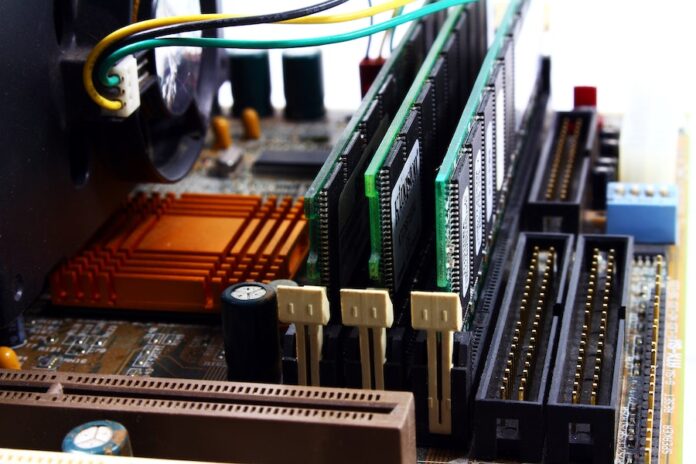In the ever-evolving world of PC hardware, one fundamental question continually looms over tech enthusiasts and builders: “Is my motherboard compatible with my CPU?” The compatibility between these two core components is the cornerstone of a functional and efficient computer system. A mismatch can lead to performance bottlenecks, frustrating troubleshooting, and even the need for costly hardware replacements. This article is designed to guide you through ensuring a harmonious union between your motherboard and CPU, whether you’re building a new PC, upgrading an existing one, or just curious about the intricacies of hardware compatibility. Let’s delve into this critical aspect of PC building and maintenance.
Is My Motherboard Compatible With CPU?
Determining whether your motherboard is compatible with a specific CPU is essential for a smooth and efficient computer build or upgrade. To check compatibility, you must ensure that the CPU’s socket type matches the socket on your motherboard and that the motherboard’s chipset supports the CPU. Additionally, you may need to update your motherboard’s BIOS/UEFI to work with newer CPUs. Always consult the motherboard and CPU manufacturer’s websites for compatibility information, and consider seeking advice from online communities or forums if you need more clarification. Compatibility is crucial for optimal performance and avoiding frustrating hardware issues in your PC build.
The Importance Of Motherboard And CPU Compatibility
Motherboard and CPU compatibility is of paramount importance in the world of computer hardware for several compelling reasons:
Performance Optimization: A compatible motherboard and CPU combination allows for optimal performance. When these two components work seamlessly together, they can harness the CPU’s full potential, resulting in faster processing speeds, smoother multitasking, and better overall system performance.
Stability and Reliability: Incompatible hardware can lead to system instability, crashes, and even data loss. A motherboard and CPU that are not in harmony may not communicate effectively, leading to erratic behavior, freeze-ups, and unexpected shutdowns. Compatibility ensures a stable and reliable computing experience.
Resource Utilization: A compatible motherboard and CPU efficiently use system resources. When mismatched, resources like RAM and storage may not be fully utilized, resulting in suboptimal performance and wasted potential.
Future-Proofing: Compatibility considerations are crucial for future upgrades. When you choose a motherboard and CPU that are compatible, you open the door to future CPU upgrades without having to replace the entire system. This saves you money in the long run and extends the lifespan of your computer.
Cost-Efficiency: Ensuring compatibility from the outset prevents costly mistakes. Incompatible components may require additional expenditures on adapters or replacements, which can be avoided through proper research and planning.
Warranty Protection: In some cases, incompatible components may void warranties on one or both parts. Sticking with compatible hardware helps protect your investment and ensures that you can seek warranty support if needed.
How Does Incompatibility Affect System Performance?
Incompatibility between components, such as the motherboard and CPU, can have a significant impact on system performance. Here’s how incompatibility affects system performance:
Reduced Processing Power:
When your motherboard and CPU are incompatible, the CPU may not operate at its intended performance levels. This can reduce processing power, slower clock speeds, and decrease overall computing performance. Your computer will need help to handle demanding tasks, such as gaming, video editing, or running resource-intensive applications.
Bottlenecks:
Incompatibility can create bottlenecks in your system. For example, if the CPU is more powerful than the motherboard can support, it won’t be able to deliver its full potential. This results in wasted processing power and an imbalanced system that could perform more efficiently.
System Instability:
Incompatible components can cause system instability. You may experience frequent crashes, freezes, or unexpected shutdowns. These issues can disrupt your work or gaming sessions and result in data loss if not addressed promptly.
Resource Mismanagement:
Incompatibility can lead to inefficient resource utilization. For instance, if the motherboard can’t handle the CPU’s demands, it may not allocate resources like RAM and bandwidth appropriately. This can lead to underutilization of resources, limiting your system’s ability to multitask or run applications smoothly.
Heat and Power Issues:
When components are mismatched, they may generate more heat than the system can dissipate or consume more power than the PSU can provide. This can result in overheating, thermal throttling, and even damage to the components, further degrading performance and potentially shortening the lifespan of your hardware.
Compatibility Errors:
Incompatibility can trigger compatibility errors, warning messages, or system alerts. These can disrupt your workflow, prompt you to make configuration changes, or require hardware modifications to resolve, impacting overall performance.
Limited Upgrade Options:
Incompatibility can restrict your ability to upgrade your system in the future. If your motherboard isn’t compatible with newer CPUs or other hardware, you may be forced to replace multiple components, leading to higher costs and complexity.
Troubleshooting Compatibility Issues
Troubleshooting compatibility issues between your motherboard and CPU can be challenging yet essential to ensure your computer functions optimally. Here’s a detailed guide on how to troubleshoot compatibility issues:
The first step in troubleshooting is to identify any symptoms of compatibility problems. These may include system crashes, blue screens of death (BSOD), error messages during boot, or erratic behavior like unexpected shutdowns or system freezes. Pay close attention to any unusual patterns or error codes displayed.
Review the documentation for your motherboard and CPU. Ensure the CPU is listed as compatible with the motherboard’s chipset and socket type. Manufacturers often provide compatibility lists or compatibility-checking tools on their websites. Cross-reference this information to confirm compatibility.
Sometimes, motherboard manufacturers release BIOS/UEFI updates to add compatibility with newer CPUs. Check if your motherboard’s BIOS/UEFI version supports your CPU. If not, updating the BIOS/UEFI to the latest version may resolve compatibility issues. Be cautious when updating BIOS/UEFI, as incorrect procedures can cause irreversible damage. Follow the manufacturer’s instructions precisely.
Ensure the CPU is correctly seated in the motherboard’s socket. Bent pins or improper installation can lead to compatibility problems. Double-check that the CPU cooler is securely attached and thermal paste is applied correctly to prevent overheating.
Incompatible CPUs may draw more power than your motherboard can provide or handle. Check that your power supply unit (PSU) can deliver the required wattage and that all power connectors are correctly connected to the motherboard and CPU.
In some cases, RAM compatibility can impact system stability. Ensure that the RAM modules you’re using are compatible with both the motherboard and CPU. Check for supported RAM speeds, capacities, and configurations.
Bottom Line
The bottom line is that motherboard and CPU compatibility is a critical factor in building and maintaining a stable and high-performing computer system. Ensuring that these components work harmoniously is essential for optimal performance, resource utilization, and long-term reliability. When compatibility issues arise, a systematic troubleshooting approach, including checking documentation, updating BIOS/UEFI, and verifying physical installation, can help identify and resolve the problem. Prioritizing compatibility from the outset of your PC build or upgrade is critical to avoiding potential pitfalls, saving time and money, and enjoying a hassle-free computing experience.
FAQ’s
What is motherboard and CPU compatibility?
Motherboard and CPU compatibility refers to the ability of a motherboard to work seamlessly with a specific CPU. It involves socket type, chipset support, BIOS/UEFI compatibility, and power requirements.
How can I check if my motherboard and CPU are compatible?
To check compatibility, review the documentation provided by the motherboard and CPU manufacturers. They often offer compatibility lists or tools on their websites. Ensure that the CPU’s socket type and chipset match those your motherboard supports.
Can I upgrade my CPU without changing the motherboard?
It depends on your motherboard’s compatibility with the new CPU. If the socket type and chipset are compatible, you can often upgrade your CPU without changing the motherboard. However, BIOS/UEFI updates may be necessary.





